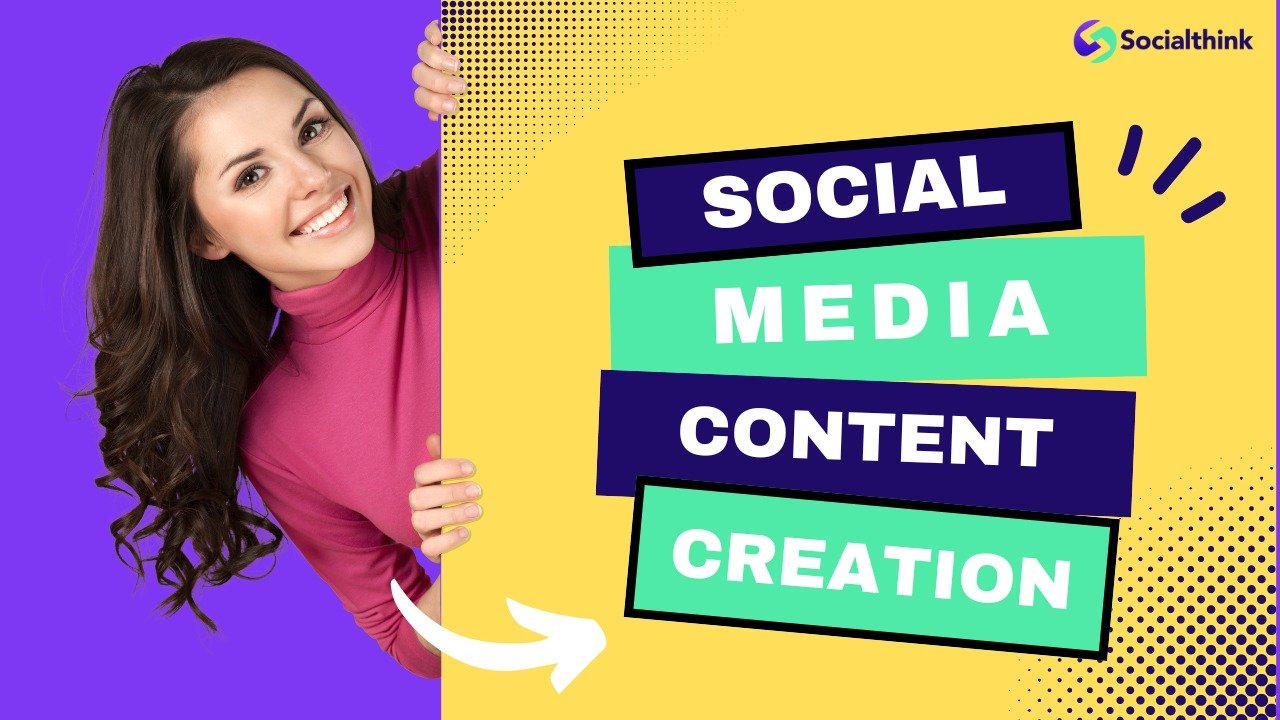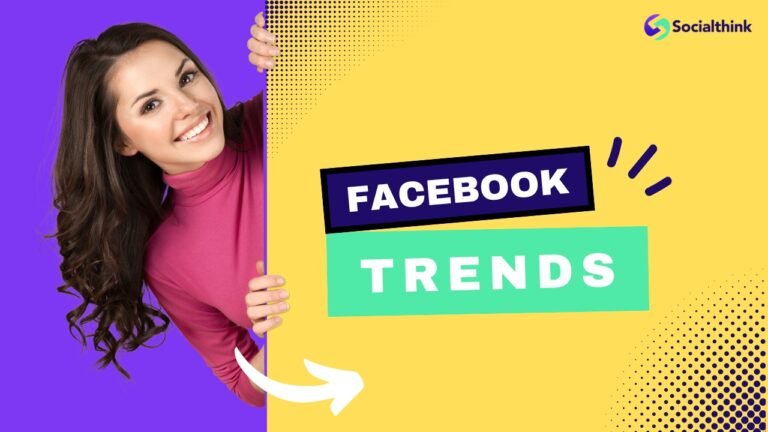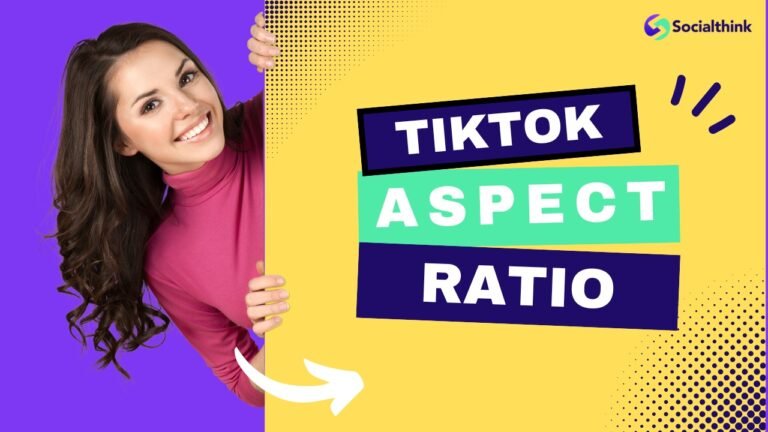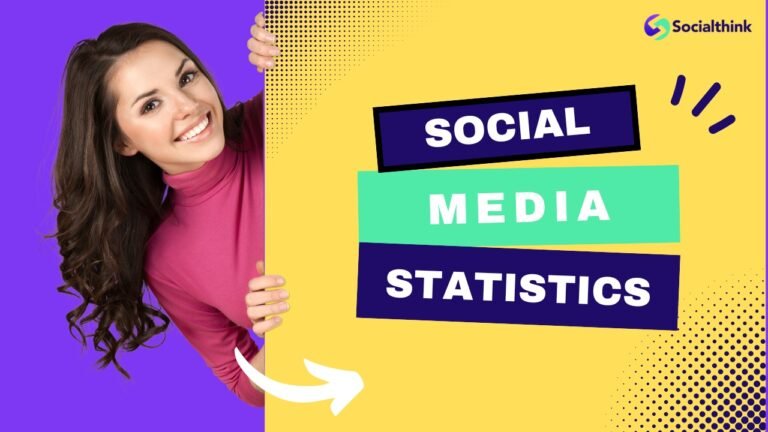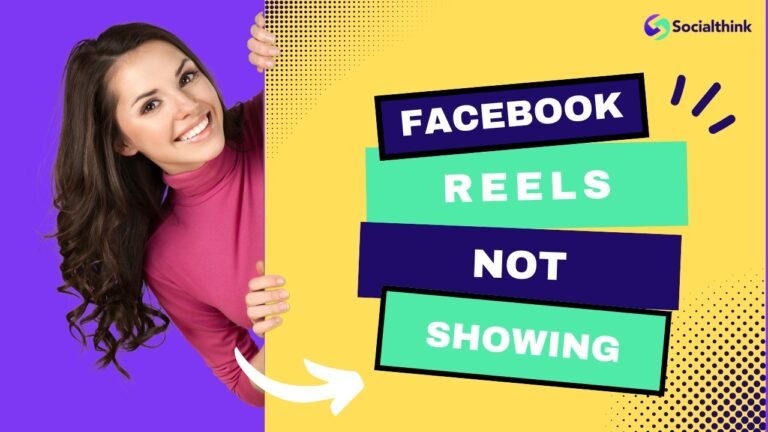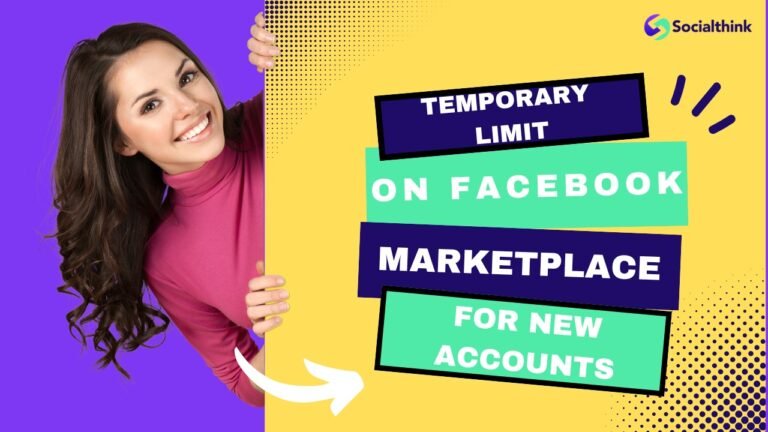Social Media Content Creation – How to Ace it For 2024 & Beyond.
At Social Think, we specialize in social media strategy, analytics, and insights designed to drive business results.
In an era where social media content creation is pivotal for brand visibility and engagement, understanding how to create effective content can set your business apart.
This article will delve into the essentials of social media content creation, providing actionable insights and strategies that can help you leverage social media to achieve your business goals.
What is Social Media Content Creation?

Social media content creation involves producing various types of content tailored for platforms like Facebook, Instagram, Twitter, and LinkedIn. This content can range from written posts and videos to infographics and testimonials. The goal is to engage your target audience effectively and drive interactions that align with your social media marketing objectives.
Why is Social Media Content Creation Important?

Creating compelling social media content is important for several reasons:
- Brand Awareness: High-quality content increases your visibility and helps establish your brand identity.
- Audience Engagement: Engaging content fosters interaction, encouraging followers to like, share, and comment, which can amplify your reach.
- Traffic Generation: Effective social media posts can drive significant traffic to your website, enhancing your overall digital marketing efforts.
- Customer Loyalty: Consistent and relevant content keeps your audience interested and loyal, turning followers into customers.
Who Does Social Media Content Creation?

Social media content creation is managed by different people and teams based on how big a business is. In small companies, one social media manager may take care of everything about content creation.
In bigger businesses, there might be special content creators and social media managers. They may even hire whole digital marketing agencies to help with creating and carrying out their social media strategy. The specific jobs can change, but the main goal is the same. It is to create fun and engaging content that connects with the target audience.
- Social Media Managers: Social media managers are responsible for developing and executing content strategies across various platforms. They analyze performance metrics and adjust strategies based on audience engagement.
- Content Creators: Content creators focus on producing original content, including graphics, videos, and written posts. Their creativity is essential for crafting engaging material that resonates with the audience.
- Freelancers: Freelancers often provide specialized content creation services, allowing businesses to tap into diverse skills without the commitment of a full-time hire. They can offer fresh perspectives and expertise in specific content types.
- Agencies: Agencies typically offer comprehensive social media management services, including content creation, strategy development, and analytics. They leverage their experience to help brands achieve their marketing goals efficiently.
How to Create a Social Media Content Plan?

Creating a robust social media content plan involves several key steps:
- Learn About Your Audience: Understanding your target audience is the first step in creating effective content. Use analytics and surveys to gather insights about their preferences, challenges, and behaviors.
- Set Goals: Define clear social media goals that align with your overall business objectives. Whether it’s increasing brand awareness or driving website traffic, having specific targets will guide your content creation efforts.
- Perform Competitive Analysis: Analyze your competitors to identify what types of content resonate with their audiences. This can provide valuable insights into effective strategies and content ideas.
- Gather Content: Collect various content types that align with your brand voice and audience interests. This may include written posts, images, videos, and user-generated content.
- Develop a Content Creation Plan: Outline a detailed plan that specifies what content will be created, who will create it, and when it will be published. This ensures a consistent flow of content.
- Create a Calendar: A social media content calendar helps you schedule posts in advance, ensuring timely and relevant content delivery. This is important for maintaining audience engagement.
- Evaluate Content: Regularly assess the performance of your content to understand what works and what doesn’t. Use analytics to refine your strategy and improve future content.
Day to Day Activities For Social Media Content Creators at Different Levels
The daily tasks of a social media content creator can be very different based on their skills and duties.
Daily Responsibilities For Entry-Level Social Media Content Creators
- Assist in creating and scheduling posts across various platforms.
- Monitor engagement metrics and respond to audience interactions.
- Conduct basic research to identify trending topics and content ideas.
Daily Responsibilities For Mid-Level Social Media Content Creators
- Develop content strategies based on audience insights and analytics.
- Collaborate with designers and other team members to produce high-quality visuals.
- Analyze content performance and adjust strategies accordingly.
Daily Responsibilities For Senior Social Media Content Creators
- Lead the content creation process, overseeing all aspects from strategy to execution.
- Provide mentorship to junior team members and freelancers.
- Conduct in-depth competitive analysis and market research to inform content strategies.
12 Types of Social Media Content to Produce

- Written Posts, Blogs, Articles, Guides, and More: Create text-based content to inform, educate or entertain your audience. This can include short social media posts, longer blog articles, how-to guides, opinion pieces, and more. Focus on topics relevant to your niche and audience interests.
- Electronic Books (eBooks): Produce longer-form, value-packed content in the form of downloadable eBooks. These can be used as lead magnets to grow your email list or establish thought leadership. Include useful information, tips, and strategies related to your industry.
- Links to External Content: Create and share links to helpful third-party content. This could be news articles, blog posts, videos, or tools your audience would appreciate. Add your thoughts when sharing the link to put your unique spin on it.
- Images: Visual content like images drives high engagement on social media. Share photos showcasing your product/service, team, behind-the-scenes, or that are simply entertaining or inspiring. Use high-quality, eye-catching images sized properly for each social network.
- Videos: Video content is extremely popular and effective on social media. Create a variety of video types, including explainers, product demos, interviews, vlogs, and more. Optimize videos for each platform, from short-form videos on TikTok and Instagram Reels to longer content on YouTube.
- Video Stories: Stories are short-lived, vertical videos or images that disappear after 24 hours. Regularly post Stories to drive engagement and stay top-of-mind. Share spontaneous, authentic content like behind-the-scenes clips, limited-time offers, polls, and more.
- Live Videos: Live stream content for an authentic, unedited way to connect with your audience in real time. Host Q&As, interviews, product demos, or event coverage. Engage with viewers by answering live comments and questions.
- Infographics: Create visually appealing infographics that break down data or complex topics in an easy-to-digest way. These highly shareable graphics can help you gain visibility and position you as an expert. Hire a designer or use templates to create professional infographics.
- Testimonials and Reviews: Share positive customer testimonials, reviews, or case studies. These provide social proof and help build trust and credibility with your audience. Create these from review sites, social media, or by reaching out to happy customers.
- Announcements: Keep your audience informed about company news, product updates, events, or milestones. Share teasers leading up to a launch to build anticipation. Make announcements visually engaging when possible, like an image featuring the news.
- Contests: Run contests or giveaways to increase engagement, followers, and leads. Choose a relevant prize, establish clear entry criteria, and promote widely. Follow up with the winner announcement and consider repurposing user-generated content from the contest.
- Holidays: Create content around holidays or special observances relevant to your brand. This could be a social media post, blog article, video, or promotion. Have fun with it and put your creative spin on the holiday.
How To Manage Content Creation Efficiently?

- Have a Content Schedule: Create a content calendar to plan and organize your upcoming content. This helps ensure you’re consistently publishing and prevents last-minute scrambling. Use a spreadsheet or tool to map out content ideas, formats, publish dates, and promotion channels.
- Monitor Trends: Stay on top of the latest trends and topics in your industry. Use social media listening, Google Trends, and other tools to identify trending conversations. Include these insights into your content to keep it timely and relevant to your audience.
- Analyze Results: Regularly review your content analytics to see what’s resonating with your audience. Look at metrics like views, engagement, click-through rates, and conversions. Use these insights to optimize future content and double down on what’s working.
- Focus on Quality, Not Quantity: Prioritize creating high-quality, valuable content over pumping out a high volume of mediocre posts. Your audience will appreciate content that educates, entertains, or inspires them. Quality content is more likely to get shares and engagement.
Best Practices For Social Media Content Creation

Here are some best practices for social media content creation:
- Know Your Brand Voice: Develop a clear and consistent brand voice that reflects your company’s personality and values. This voice should be used across all your social media content. Whether your brand is friendly, humorous, professional, or inspirational, ensure it shines through in your captions, visuals, and interactions.
- Ensure Consistency: Maintain a consistent posting schedule and content themes across your social channels. This helps your audience know what to expect and keeps them engaged. Use a content calendar to plan ahead and ensure a good mix of content types.
- Optimize For Each Platform: Tailor your content for each social media platform’s unique characteristics and audience. For example, keep videos short and punchy on TikTok, while longer-form content may perform better on YouTube or a blog. Adjust your tone, hashtags, and post formats to fit each network.
- Engage With Your Audience: Social media is a two-way conversation, so actively engage with your followers. Respond to comments and DMs promptly and thoughtfully. Encourage audience participation through questions, polls, and user-generated content. Show your human side and build genuine relationships with your community.
Examples of Social Media Platforms and the Content That Works Best For Them

To pick the right social media platforms for your brand, you need to think about your target audience, the industry you are in, and your marketing goals. Each platform serves different needs and works best with various content formats.
It’s important to understand these differences. This will help you create content that gets more engagement and helps you meet your online marketing goals.
Make sure to do good research. Look at each platform’s audience, content style, and how their algorithms work to help you make better choices.
Facebook is great for sharing a variety of content including text posts, images, videos, and links. Short-form videos, user-generated content, polls, relevant memes, and posts that spark conversations tend to do well on Facebook. Aim to build an engaged community by sharing authentic, valuable content.
Instagram is all about visuals. Short-form video content like Reels gets the highest engagement, followed by carousels and single-image posts. Focus on high-quality, eye-catching photos and videos that showcase your brand personality. Encourage audience participation through contests and user-generated content.
Twitter (now known as X) is ideal for sharing short text-based posts, links, images, and videos. Aim for timely, newsworthy, and conversation-starting content. Jump on trending topics and hashtags relevant to your industry. Engage with your audience by asking questions, running polls, and responding to mentions.
Blogs
Blogs are perfect for long-form, in-depth content like how-to guides, listicles, opinion pieces, and industry news. Use storytelling, subheadings, and visuals to make your posts engaging and readable. Promote your blog content on other social channels to drive traffic back to your website.
Social Media Content Creation Tools

Hootsuite
Hootsuite is an all-in-one social media management platform. It allows you to create, schedule, and publish content across multiple social networks from a single dashboard.
Hootsuite also provides tools for social listening, analytics, and team collaboration. It’s a comprehensive solution for businesses looking to streamline their social media efforts and improve their online presence.
Canva
Canva is a user-friendly graphic design tool that’s perfect for creating visually appealing social media content. It offers a wide range of templates, graphics, and fonts that you can customize to fit your brand.
Canvas’s drag-and-drop interface makes it easy to design professional-looking images, even if you have no prior design experience. It’s a great tool for creating eye-catching posts that stand out in social media feeds.
Adobe Express (Formerly PhotoShop Express)
Adobe Express is a simplified version of Photoshop that’s tailored for social media content creation. It provides a variety of editing tools, filters, and effects to enhance your images.
Adobe Express also offers templates for various social media platforms, making it easy to create content that’s optimized for each network. It’s a good choice for those who want more advanced editing capabilities than Canva but don’t need the full complexity of Photoshop.
Capcut
CapCut is a popular video editing app that’s well-suited for creating engaging social media videos. It offers a range of features, including adding music, text overlays, stickers, and effects.
CapCut’s intuitive interface and powerful tools make it easy to create professional-looking videos on your mobile device. It’s a great option for businesses looking to include more video content in their social media strategy.
Google Trends
Google Trends is a free tool that allows you to see the popularity of search terms over time. While it’s not a content creation tool per se, it can be incredibly valuable for informing your social media content strategy.
By exploring trending topics and search queries related to your industry, you can identify opportunities to create timely and relevant content that resonates with your audience.
Google Trends can help you stay on top of what’s capturing people’s attention and adapt your content accordingly.
FAQ’s:
What Makes Good Social Media Content?
Good social media content is engaging, relevant, and aligned with your audience’s interests. It should also reflect your brand voice and encourage interaction.
How to Write Social Media Content?
Focus on clarity and brevity, use compelling visuals, and include calls-to-action to drive engagement.
What are the Best Apps to Create Social Media Content?
Popular apps include Canva for graphics, Hootsuite for management, and Capcut for video editing.
What is the Formula For Content Creation?
A successful content creation formula involves understanding your audience, setting clear goals, and delivering high-quality, engaging content consistently.
How Often Should I Post on Social Media?
Posting frequency varies by platform, but consistency is key. Aim for at least once a day on most platforms.
Can I Recycle Content Across Different Platforms?
Yes, recycling content can help maximize reach, but ensure it’s optimized for each platform’s unique audience and format.
What is the Importance of Hashtags in Social Media Content?
Hashtags enhance discoverability, allowing your content to reach a broader audience and engage users interested in specific topics.
Conclusion
In the realm of social media, effective content creation is not just an option; it’s a necessity.
At Social Think, we empower businesses to harness the power of social media through strategic content creation.
.By understanding your audience, setting clear goals, and consistently delivering high-quality content, you can significantly enhance your brand’s online presence.
Ready to take your social media strategy to the next level? Get in touch with us today to explore how we can help you achieve your business goals through impactful social media content creation.

